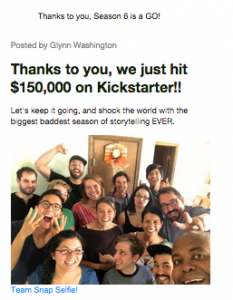
You work hard on your emails.
You put in the time to share something you think your audience will enjoy, and it’s frustrating that less than half of your subscribers are giving your emails a chance.
What can you do to get more people to open your emails?
You shouldn’t expect that everyone on your list — even your most engaged readers — will read every message you send out.
Which brings up a big question: should you resend an email to subscribers who didn’t open their email the first time?
While this could get your emails opened by more people, you have to make sure you’re resending effectively to avoid bombarding people with the same message.
Keep in mind that if some of your contacts have disabled their images and don’t click on any links within your message, that contact will not show up as an open in your reports. Sending these people an identical email might increase the chance that they start to tune your business out.
Here’s how to resend the right way:
1. Only send to subscribers that didn’t open the first time
When resending your email, make sure you’re targeting those who missed your message the first time. You can use your email reports to select subscribers listed in the “Did Not Open” report.
Add these subscribers to a new list or tag them with a clear name like “6.25.15 did not opens.” This will help you stay organized, so you’re sending to the right group.
2. Choose your campaign carefully
Resending emails is a useful tool, but you don’t want to resend every campaign you send out. Be selective about which emails you resend. Think of a resend as a follow-up, often for time-sensitive messages.
A great example is if your store is holding a week-long sale. You can send an email out on the first day of the sale, and then send a slightly modified version of your email on the last day of the sale to those that might have missed it earlier in the week.
3. Get your timing right
While most email is opened within 24 hours of sending, it’s best to be on safe side and wait a few days before resending so everyone has time to find it in their inbox the first time.
Additionally, spend some time thinking about the best time to send your email. If you sent the first version of your email in the early morning, consider resending in the early evening to see if the timing affects your results.
4. Switch your subject line
If your subject line didn’t attract their attention the first time, why use it again? With a resend you have a second chance to think of a snappier subject line to stand out.
Take a look at some of your previous emails. Were there any subject lines that got a positive response from your readers? Try a similar subject line when resending your campaign.
Here are 12 subject line tweaks to help your email get noticed.
5. Give your content a quick refresh
I like to equate resending emails with double steeping a cup of tea. Keep the main message (or tea leaves) the same to extend the lifetime and reach of your campaign, but this time try adding a couple extra tidbits — this could be an extra dose of lemon or honey in your tea.
If you’re resending an email about an upcoming event, include a fresh opening to give the email something new. While much of your content can stay the same, a few changes will ensure your readers are not getting burnt-out with repeat messages.
6. Watch out for unsubscribes
Following all these steps should put you in a great position to reach more subscribers in a way that considerate to them and convenient for you.
You’ll still want to check back in with your reports and make sure your number of unsubscribes aren’t spiking after you’ve resent a message.
If unsubscribes are higher than usual, you’ll want to back off from resending and find out what sending frequency works best for your audience.
How can resending affect your results?
Resending certain emails means you get to drive home your most important messages without creating a campaign from scratch. If you receive a similar open rate to when you sent the first time, you’ve almost doubled your open rate with minimal effort.
With these steps in mind, you’re in good shape to resend effectively.
Resending can be another opportunity to learn more about what appeals to your audience. If you receive better results from your second email than your first, take a look at the subject line and content and see if you can apply something similar to future emails!
As long as you always have your subscribers in mind and are making adjustments based on their interest level, you’ll continue to see your open rate climb over time.
Think resending an email might work for your audience? Give it a try and let us know your results.
Looking for something else to try? How about one of these 5 simple strategies to improve your email open rates?
(185)
Report Post







